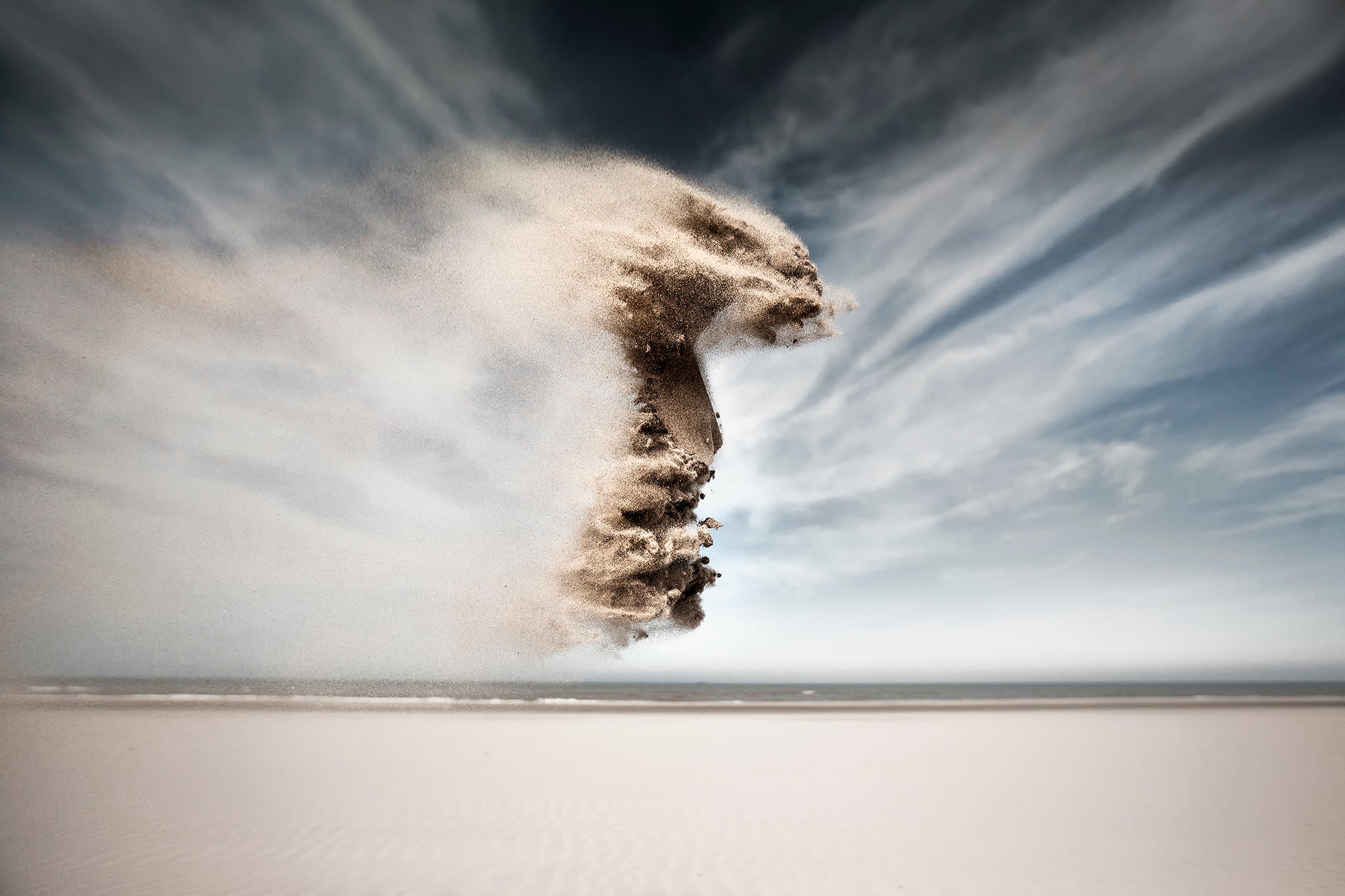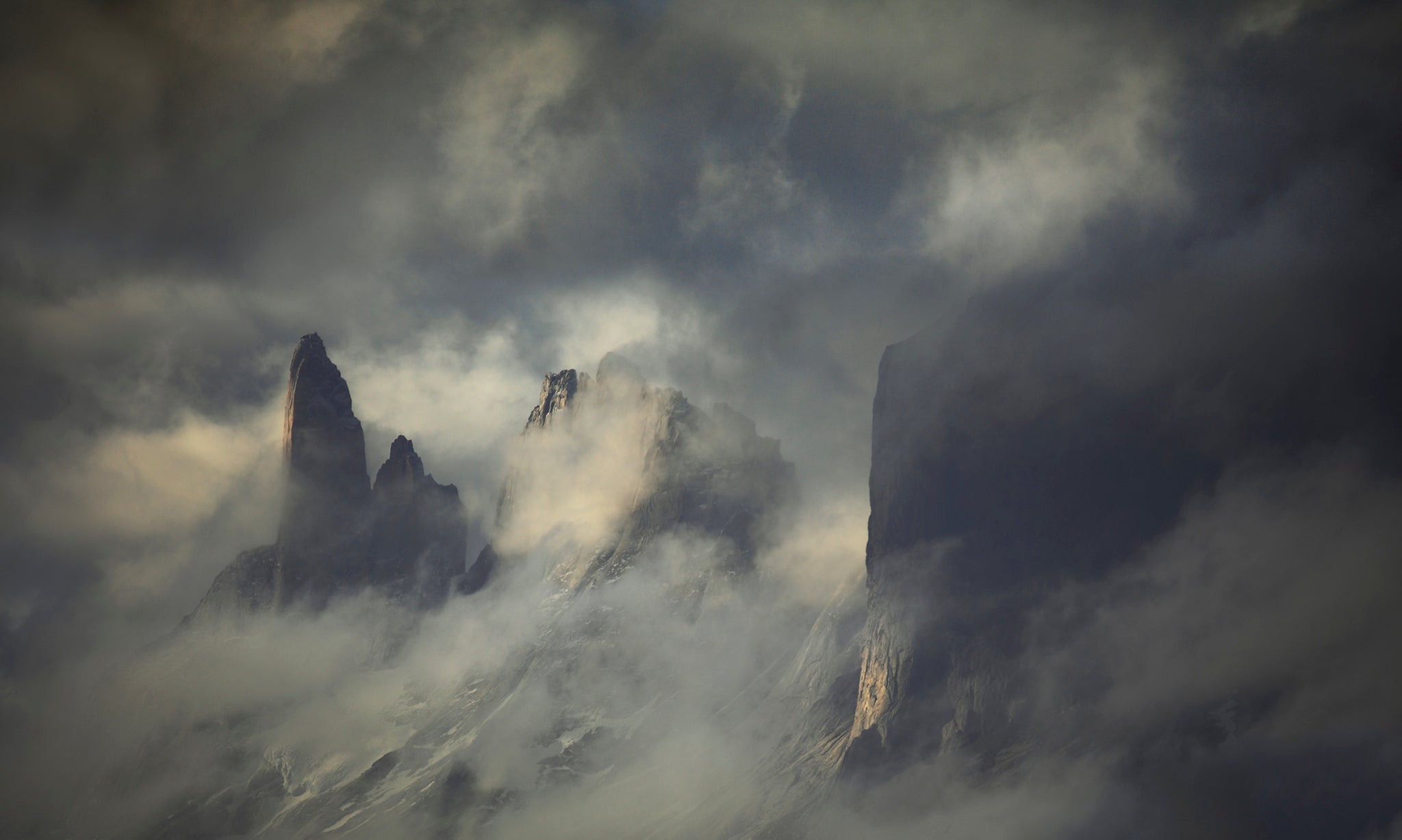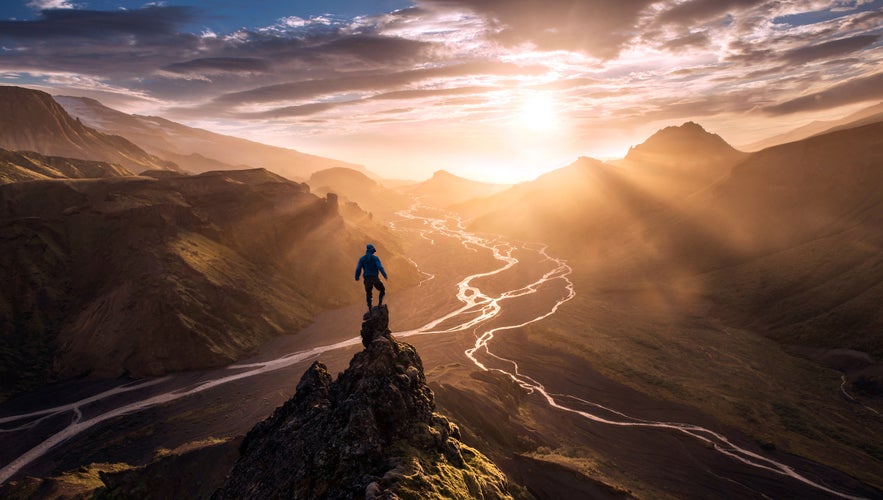
Inspiration, travel and adventure – these are the three elements that photographers often search for when they travel out into the world. For legendary landscape photographer, Max Rive, the exhilaration of being able to combine these things with his love for teaching others is only the beginning.
Well-versed in the ways of the land, Max amplifies his lust for life by hiking to unknown places in an attempt to capture and reveal the hidden beauty of our planet. In this interview, we explore how he got started in photography, the importance that this art form has played in his life, as well as how he creates his unique and breathtaking images.
- Discover this Ultimate Guide to Landscape Photography
- Check out these Russia Photo Workshops
- Learn How to Become a Professional Landscape Photographer
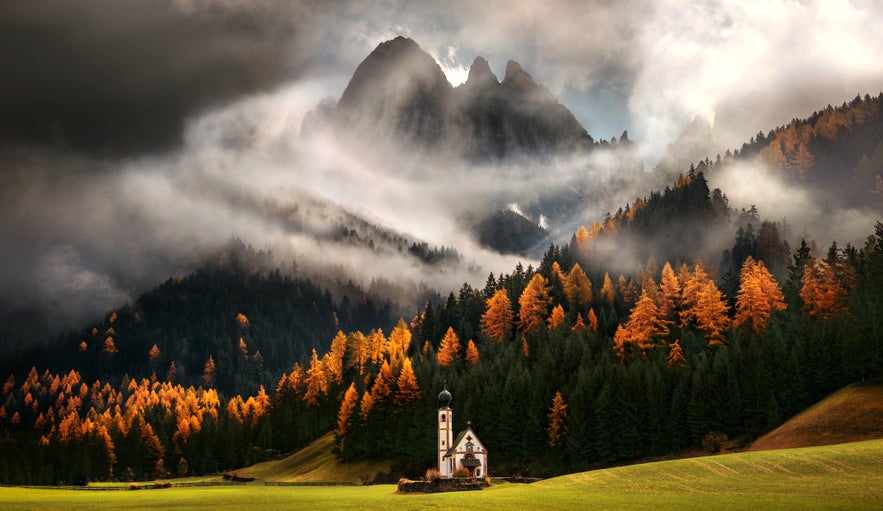 Max Rive is a landscape photographer from the Netherlands with an impeccable style. Photo by: 'Max Rive'.
Max Rive is a landscape photographer from the Netherlands with an impeccable style. Photo by: 'Max Rive'.
Hello Max! Can you tell us a little bit about who you are and how you got started with photography? Was there anything specific that you can remember that made you want to become a photographer?
Hello! I'm a landscape photographer from the Netherlands and I have been shooting for over 10 years now.
I’ve always been someone who searched for a creative outlet in combination with sports. That is probably the reason landscape photography was such a good match for me.
I started out with a small compact cameras because I wanted to stay lightweight. I also didn’t really feel like I was missing out on anything in the technical department. Most of all, I wanted to see new countries, mountains and glaciers, so more pixels, dynamic range and corner sharpness weren't things that I was too bothered about.
Using a compact camera required me to be a bit more creative, especially as the first ones that I used didn't have a manual mode or exposure compensation. In order to refrain from overexposing my images, I would aim a bit higher with my camera towards the sky and hold the shutter button for focus on the sky, which wasn't that great. To get a shorter exposure, I would then pressed the shutter button and aim my camera back at the landscape. As I didn’t have a very wide angle lens at the time, I had to improvise with my compact as well by taking multiple shots with overlap and then merging them together: manually in Paint first and later in Photoshop.
Tell us about what landscape photography means to you and why you chose to pursue a career as a landscape photographer. How has it shaped who you are as a person today?
Landscape photography is a lifestyle for me, so it means quite a lot. It allows me to see the world and gives me the challenge and purpose that I need to stay excited. It also allows me to spend all of my time doing what I love the most, since I don't have to spend any time working from within an office. There was a time, as a student, when I was unsure about what I wanted to do in life and the prospect of sitting in an office, going to work 5 days a week, really scared me.
I never really chose landscape photography as a career – it just happened by following my passion. Six years later, I began to believe that I could possibly do it full time.
Everything that you do shapes who you are. Travelling the world will give you a new perspective of other cultures and people. There is another world out there, besides the one that you know. One thing that stood out for me is how nature is being destroyed in favour of welfare and economic growth. This has influenced how I work, as I have realised that all of my actions will directly result in consequences. It has made me very competitive and motivated to make the most out of what I do.
Travelling has given me the perspective to realise that I want to make positive changes in the world, which I believe I am able to do with landscape photography.
- See also: Travel Photography Explained
What is most difficult part of being a landscape photographer for you, and what is the most rewarding?
The most challenging part of being a landscape photographer is that it can sometimes get a bit repetitive. I may find myself drained fo creativity when I put all of my energy into it, especially when I find what I'm photographing particularly appealing, or if it has a lot of diversity.
When it feels repetitive after a time, I look for new ways to experience the connection that I had with it when I first started.
On the other hand, when you manage to achieve your creative vision, it's like finally putting all of the pieces together in a giant puzzle. Exploring and finding a great, unique composition gives me this same feeling. Creating your own style is not the easiest but if it works, then it can be the most rewarding thing.
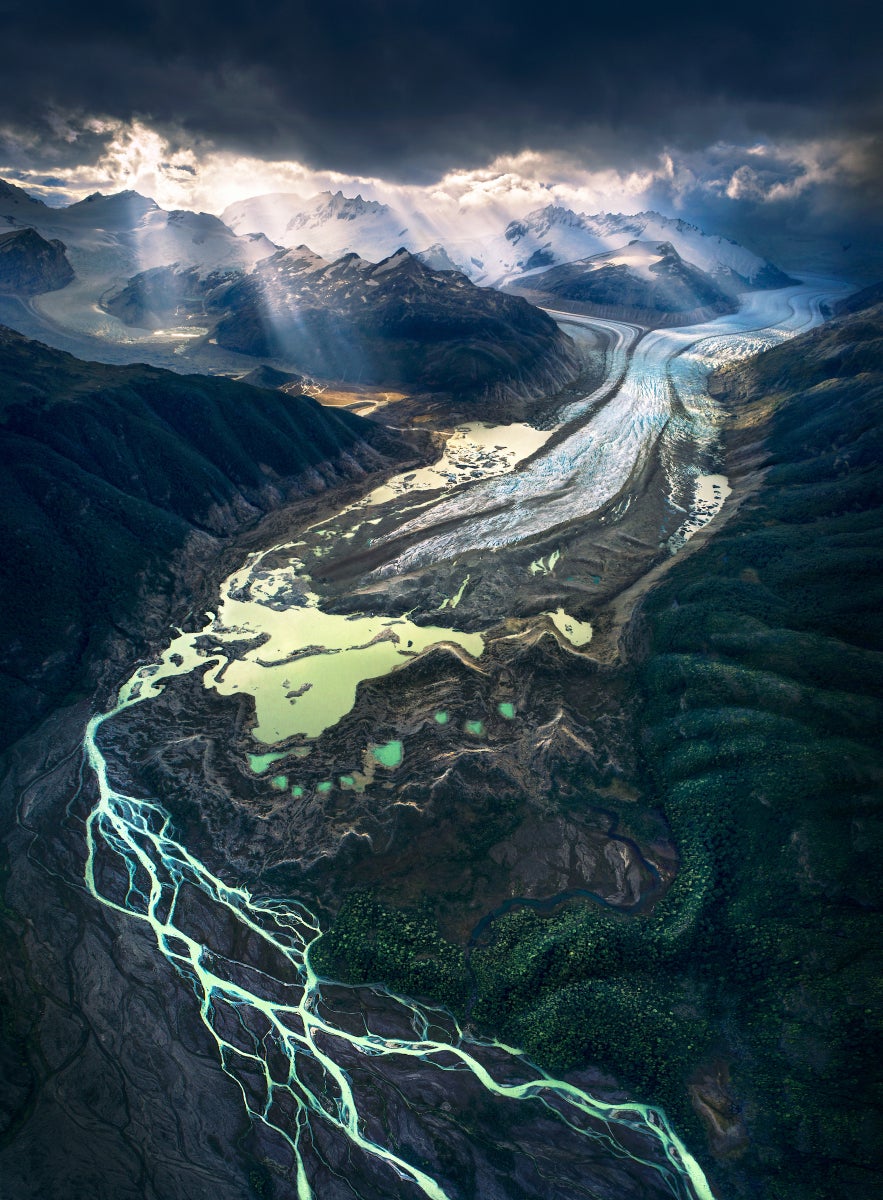 Achieving your creative vision is like putting together the pieces of a puzzle. Photo by: 'Max Rive'.
Achieving your creative vision is like putting together the pieces of a puzzle. Photo by: 'Max Rive'.
Whose work has influenced you the most, photographically or otherwise? In addition, who or what inspires you to keep creating and exploring?
All creative photographers inspire me to keep improving upon my own work.
Everything in nature is so unique and the world is so big. I feel that there is no end to my inspiration or creativity. Every piece of work that I produce will have its own spin on it. I enjoy every photograph and the challenge of making something of it.
How would you describe your photography style and how did you go about developing it?
I'd describe it as dramatic and creative, with lots of depth and colours. When I first started out in photography, I used wide angle lenses a lot and often shot in the horizontal format. However, I have since managed to become a bit more of an all-rounder, shooting vertical compositions as well as using both wide angle lenses and tele zooms.
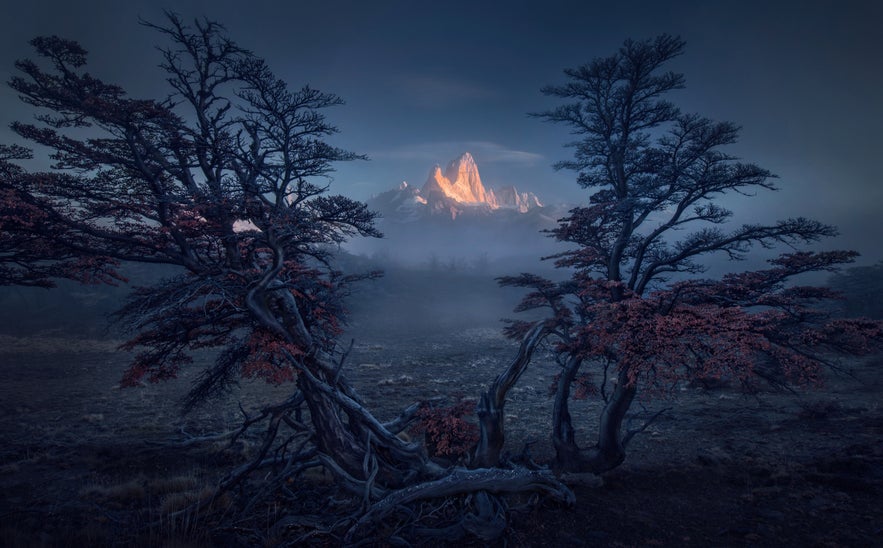 There is no end to Max's creativity or vision. Photo by: 'Max Rive'.
There is no end to Max's creativity or vision. Photo by: 'Max Rive'.
In your opinion, what makes a photograph stand out from others? Is there a key to creating a successful image?
I feel that for a photograph to stand out, it should evoke a strong emotion from the viewer. If it is unique in some way and doesn't feel repetitive, then it will catch my attention. This might be that the image depicts a new location or involves putting a spin on a certain location that has been well-photographed.
Sometimes, even the creative style of an image is enough to make it successful.
I don't think that there is a specific formula that will make an image better than the rest, but if you follow the things that I've mentioned above and are able to come up with a strong composition in good light, then the right processing might help to contribute to its success.
Can you take us through your creative process? How do you plan your shoots and what kind of homework is necessary to get to know the place better? How do you look for a composition and how do you shape the final image?
The first thing that I consider is the feeling of the location. This generally allows me to figure out where I really want to go next with the image. It's important to understand your feelings when you reach a new place, because the drive that you experience will shape how you photograph it.
There have been only a few occasions when I went to a location that didn't interest me as much as the others. As I wasn't excited by the place, I wasn't able to achieve the results that I wanted. It wasn't that the locations weren't good but more that I didn't have the energy or the motivation to explore every tree or mountain top.
Once I have an idea in mind about an area, I'll often use Google Earth to scout for possible locations within that area which might excite me and make for nice pictures. I look for high mountain views and mark the ones that I think could be good. These planned locations then form the guideline for my trip itinerary. I'll often end up hiking from one Google Earth viewpoint that I've marked out to the next. In between, I will always find things that I might not have been able to see with Google Earth, such as waterfalls, rivers, flowers, caves and so on.
After I've scouted with Google Earth, I will then choose which locations are best for my trip, according to the season and best weather conditions. For example, if I want to shoot in a location with lakes and rivers, then the winter season may not be a good option due to the poor visibility afforded by snow and ice. The same goes for wildflowers and fall foliage.
Once I've made my final selection, I'll then plan the required number of days that I'll need to complete the trip. I calculate the distances between the locations and add a few bad weather days to the itinerary, just in case. I also add plenty of extra days for exploring.
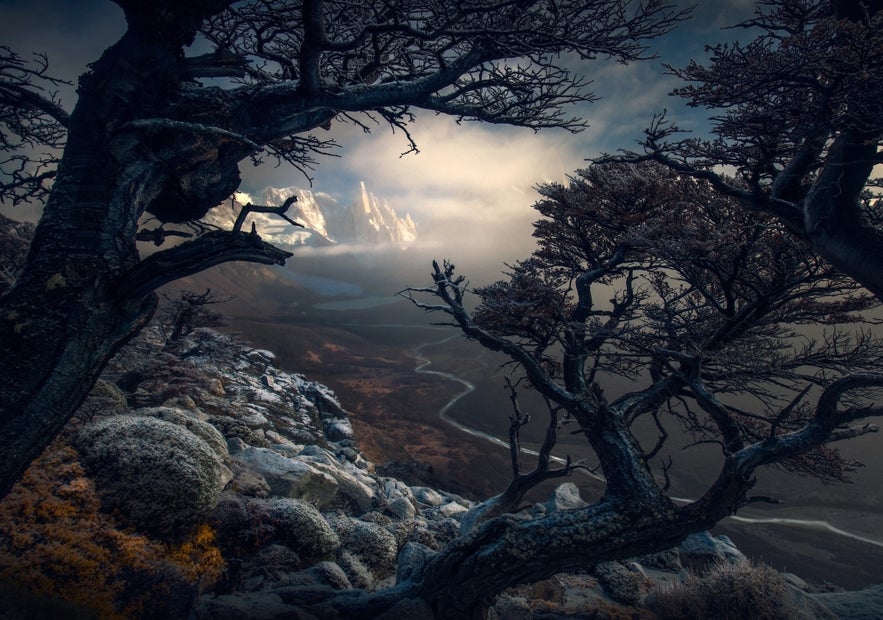 Max plans his trips around his research. Photo by: 'Max Rive'.
Max plans his trips around his research. Photo by: 'Max Rive'.
By Googling everything that I need to know from the start, I am able to ensure that I'll be well-prepared for my trip. Planning with Google is especially easy for a place like El Chalten in Patagonia, which receives a lot of travellers every year. However, planning may get a little bit more challenging when you want to visit small villages, such as in Peru. In some cases, you may not be able to find the villages online in order to plan your transport.
Once I get to the place, I find that looking for compositions may be easy, but finding a good composition can be more challenging. The moment that I have my camera in hand, I begin to look for compositional elements. With experience, it becomes easier to recognise what works and what doesn't, though I'm still pretty active and like to check out certain angles for myself, such as a tree or waterfall that might be higher up from the ground. Whenever I am with other landscape photographers, I notice that my natural curiosity to look for new compositions is increased.
What I find useful in-field is to look for a number of different compositions and then to compare them to one another after you have shot them. I'll do this by putting my jacket over my head and camera, so that I can see the images being played back without any reflections on the screen or distractions. I'll compare about ten different images with varying compositions to see what works and where I can improve.
Once I get home, I'll open all of the RAW images to see if I am able to use them to realise my creative vision. Sometimes, I'll see things in the images on the computer screen which I may not have noticed while I was in-field, such as distractions which might need to be removed. I may even realise that a certain crop works better, or that adding a bit of sidelight will improve the image.
Which has been your favourite location for photography and why?
My favourite location for photography has to be Patagonia. When you are there, you are surrounded by the most amazing mountains in the world, such as Fitz Roy and Cerro Torre. In turn, they are surrounded by the most amazing forests in the world. There is so much to photograph in this part of the world, yet it is still a challenge to come up with something unique.
Shooting in Patagonia is the perfect balance between putting the creative pieces together and getting the results.
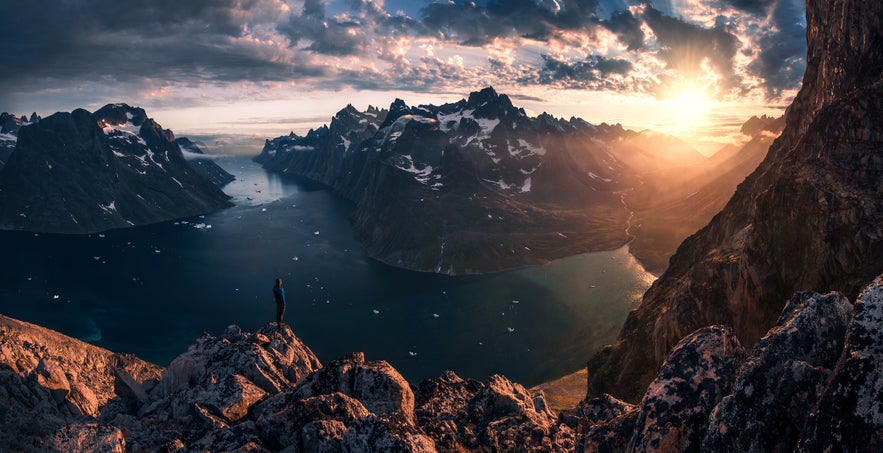 Max enjoys shooting wide landscapes. Photo by: 'Max Rive'.
Max enjoys shooting wide landscapes. Photo by: 'Max Rive'.
- See also: Patagonia Photo Workshops
What is your favourite lens that you take out for landscape photography and why do you like to use it?
I have two lenses which are equally as important to me: a wide angle lens and a tele zoom lens.
In terms of wide angle lenses, my favourites are either the 14-24mm or Tamron 15-30mm. I especially loved using wide angle lenses when I first started using a DSLR, the Nikon D800.
These days, I like to use the tele zoom lens as well. My favourite is the 28-300mm, which allows me to cover a big range. It isn't the sharpest lens but the advantage of not having to change lenses in-field outweighs the lack of sharpness. Oftentimes, you won't be able to see the difference on a computer monitor anyway.
When you go out on longer camping adventures, what kind of camera gear do you take with you? Does this differ in any way from the gear that you would usually take with you for landscape photography?
I don't have much camera gear – only the two lenses that I just mentioned and my two drones. For some reason, I have never really been interested in gear. I'm more interested in the locations that I can visit.
If certain equipment works for me, then I won't look further into getting extra gear. I've also never been one to nitpick about pixel sharpness. Less gear is more convenient for me, particularly when I am hiking or camping. Perhaps I developed this mindset after camping during winter for the first 6 years of my career! 😊
Is there any camera gear that you're looking forward to seeing on the market in the near future that would help you with your work?
If its weight is no more than 10 grams and it has 1000 MP, or if I'm able to shoot in the dark handheld with it, then it will tick my boxes!
In all seriousness, I do not keep up with the latest gear on the camera market. However, I am always surprised by the fact that the lenses do not seem to improve that much in terms of technology. For example, the Nikon 14-24mm is still one of the best wide angle lenses on the market.
Your skills with post processing really stand out from the rest. What kind of tools do you use for editing? Do you have any advice for someone who has very little computer knowledge but would like to begin learning post processing techniques?
The tools that I use a lot for editing include the clone stamp, dodge and burn, and quick selection. There is nothing too exciting there. I think that the more simple the techniques, the less distracted you'll be when post-processing.
My advice to a total beginner is to play around a bit with Photoshop and learn to use it yourself, so that you can develop a style and workflow that is easy to understand for you. This will allow you to understand the principles of how post-processing fits in with the rest of the elements involved in creating an image.
With so many advances in camera technology and photography, as well as post processing techniques, how do you educate yourself to take better photos?
Being inspired by others and being critical of my own work allows me to improve upon my own photography. This is something that comes naturally for me, as it's in my character. I'm a perfectionist, which makes me pretty critical of my own work. I often think about what lays ahead, rather than what I've already done, which can have a huge influence upon how I work.
Also, looking at other people's photographs and having an opinion about it helps. I never copy the work of others, but I do use the emotion that it invokes within me to improve my own images.
You also teach workshops. Can you talk about how the idea to educate others about photography came about and what separates your photography workshops from the rest?
It means a lot to me when people are really inspired by my work. I appreciate having these people on my tours and when I manage to help them with their work and to teach them my own unique style, it makes it even more satisfying.
My style of photography is different than others, so it can be more challenging to convince people to take it on for themselves. It doesn't work for everyone and that is totally fine.
On my workshops, everyone has the freedom to explore. On some of my tours, like my past Greenland expeditions and upcoming tours to Peru, as well as the Himalayas, I have spent months exploring already for great places to take people for landscape photography. The itineraries are not made by a tour company; they are made by me! The slogan, "by photographers for photographers" works well here, I think.
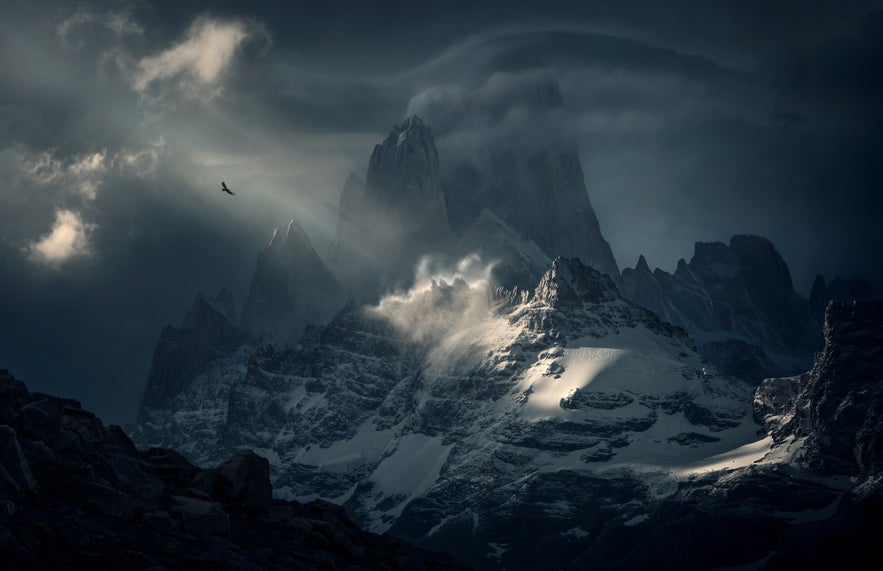 On Max's workshops, everyone has the freedom to explore. Photo by: 'Max Rive'.
On Max's workshops, everyone has the freedom to explore. Photo by: 'Max Rive'.
What is your favourite part about teaching workshops?
The fact that I am able to show photographers these unique places that I have scouted for so long. It's also a wonderful feeling to be able to meet the people whom I have inspired. I derive a lot from the connections and friendships that are established afterwards.
Do you still find photography challenging even after all this time?
Yes, certainly. For me, it's not a question of whether it can be challenging, but how to make sure that it stays challenging. In other words, if I don't find it challenging at some point, then the problem will be within myself and I should find new ways to make it challenging again.
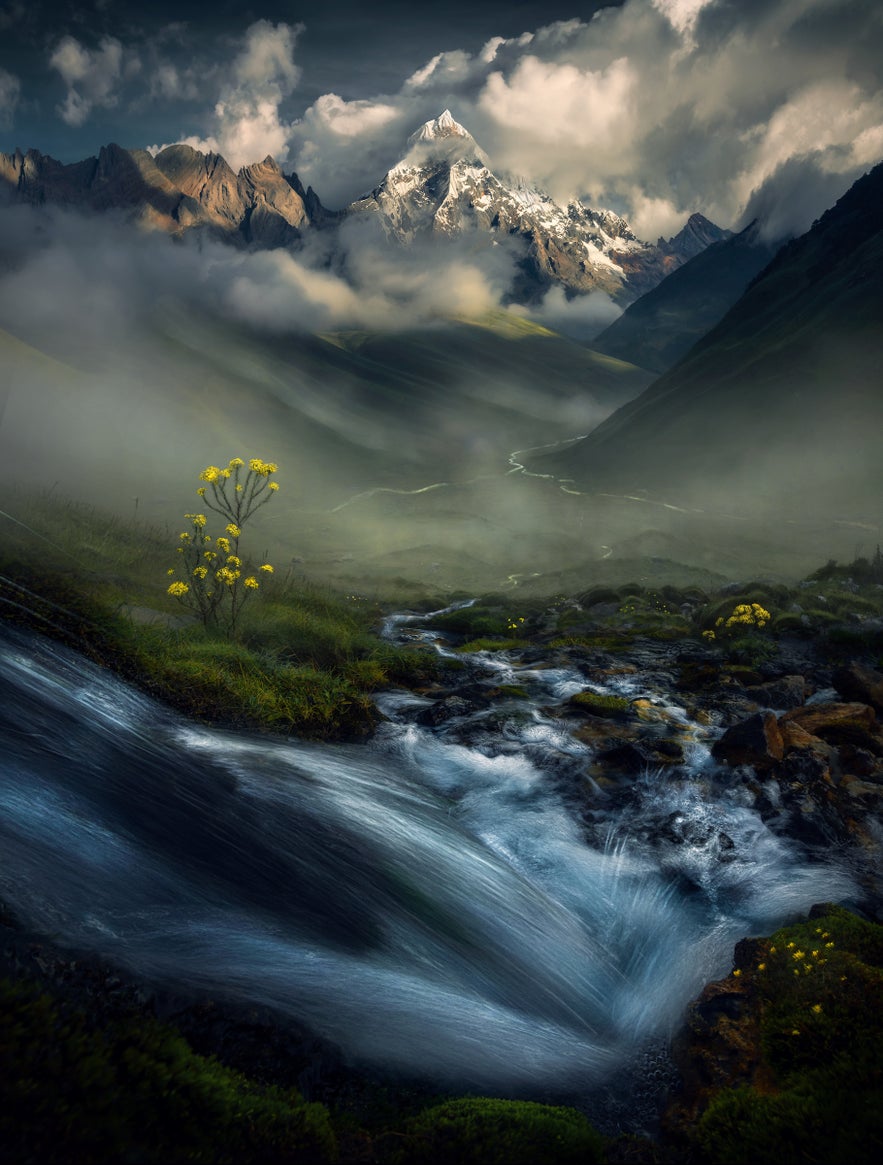 Max enjoys the challenge of photography. Photo by: 'Max Rive'.
Max enjoys the challenge of photography. Photo by: 'Max Rive'.
The world is full of amazing places and photo opportunities – what are some of the countries or regions you would like to visit and photograph in the coming years?
I'd like to visit some of the more unknown places, such as the Middle East, Pakistan, West-Asia, the Himalayas in India and especially China. I even had a trip to China planned but had to cancel due to the rules regarding a foreign presence in the region. I will try again next year, as China has so much to offer.
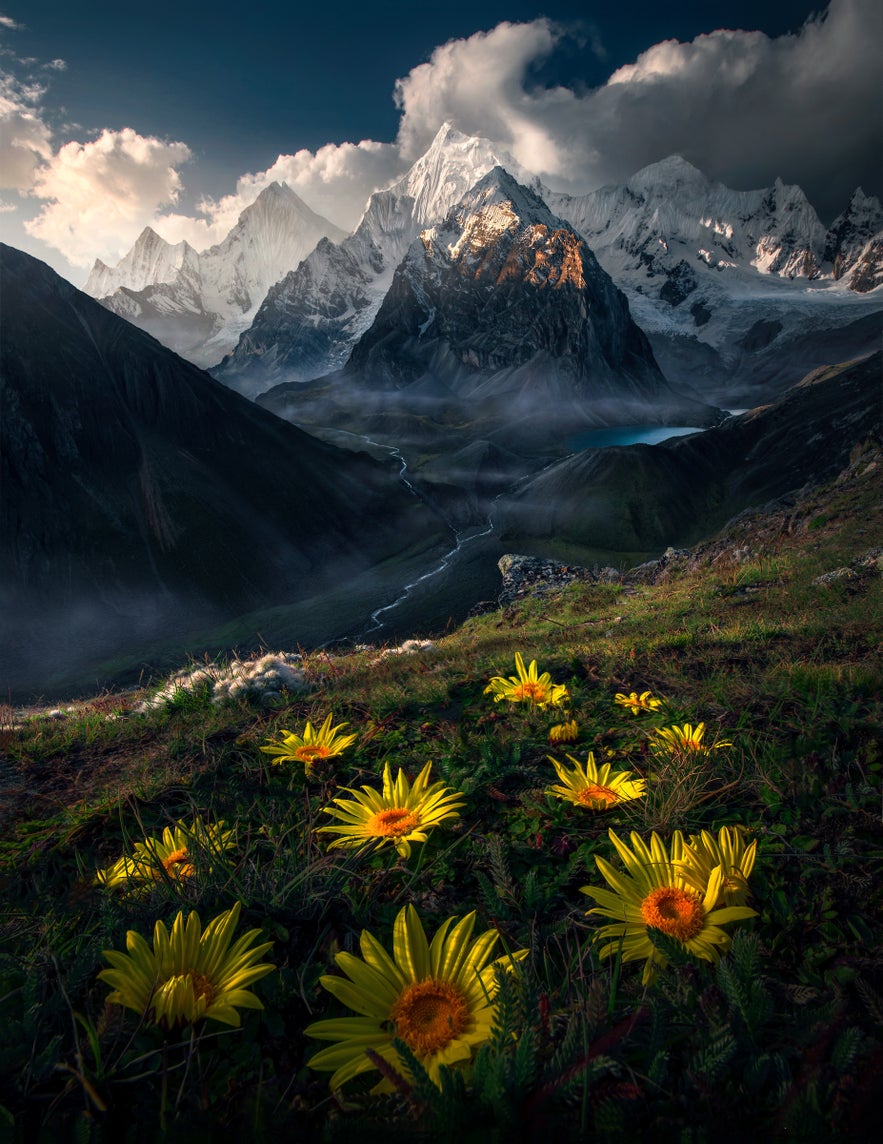 There are many places still left for Max to visit. Photo by: 'Max Rive'.
There are many places still left for Max to visit. Photo by: 'Max Rive'.
Finally, what advice would you give to someone who is just starting out with landscape photography?
Stop reading and staring at your screen. Get out there... the mountains are calling! 😉
For more information on Max Rive's work, you can visit his website or find him on Facebook and Instagram.
Learn to master the art of photography as you travel to incredible destinations all around the world! Check out our range of international photo tours and photography workshops.


